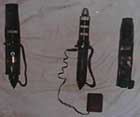|
|
|
|
|
|
|
|
|
|
| |
| |
Silence, Imprisonment or Exile – Could You Choose?
 |
26th August 1999 Tortured to Death: Tashi Tsering attempted to raise the Tibetan national flag at the Potala Palace on the 50th anniversary of the Chinese Communist Party. |
China's consistent use of excessive military force to stifle dissent has resulted in widespread human rights abuse. Since 1994, the Chinese government announced a new policy aimed at tighter controls in Tibet, resulting in longer sentences for political offences, increased control over monasteries and nunneries, a demand for declaration of loyalty from thousands of Tibetans, intensified political education in schools, and more detentions.

Common forms of torture include severe beatings, use of electric cattle–prods, handcuffs or leg–irons, suspension by the arms,
deprivation of sleep or food, exposure to cold, and other brutalities. Furthermore, human rights and humanitarian organisations are
denied access to prisons and detention centres in Tibet.

- 145 known political prisoners were held in Chinese prisons during 2002, including the 11th Panchen Lama Gendun Choekyi Nyima, who became the world's youngest political prisoner at the age of 6
- No opportunity is given to invoke their rights to freedom of expression, assembly and association. When they are caught exercising these rights, they are detained, mal-treated and tortured.
- Restrictions are placed on their freedom to practise religion. Possession of the Dalai Lama's photo is strictly prohibited and the result is arrest and imprisonment. Support or recognition of the role of the Dalai Lama is viewed as "splittist" and is suppressed.
- According to the United Nation's Development Programme (UNDP) China Human Rights Report in 2002, Tibet is one of the poorest regions ruled by Beijing. In Tibet there is a highly ethically defined inequality in employment – the government, commerce and service sectors are all dominated by Han Chinese, further worsened by the ever-increasing population transfer.
- Save the Children and Médecins Sans Frontières pulled out of Tibet in 2002 because of "unworkable restrictions".
- Access to health care and health services remains beyond Tibetan income. One month's medical care (necessary to heal a broken leg) costs 25% of an average annual income.
Back to About Tibet
